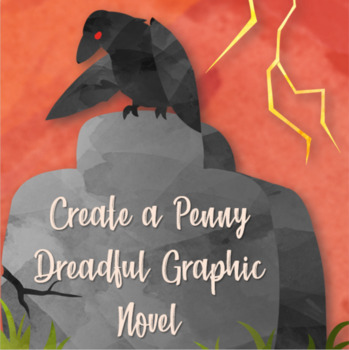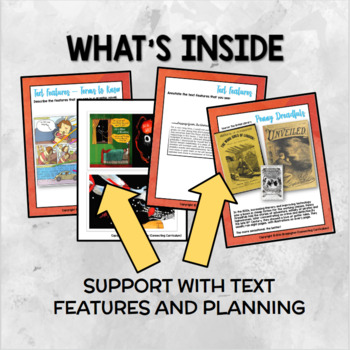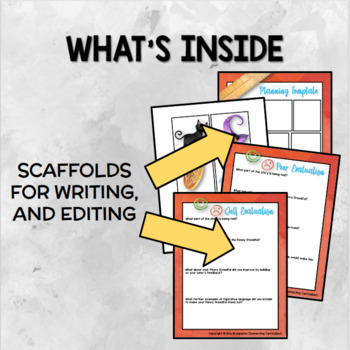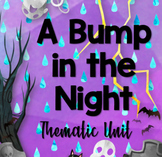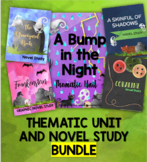A Bump in the Night: Create a Penny Dreadful Graphic Novel
Connecting Curriculum
251 Followers
Grade Levels
6th - 8th
Subjects
Resource Type
Standards
CCSSCCRA.R.1
CCSSCCRA.R.2
CCSSCCRA.R.5
CCSSCCRA.R.7
CCSSCCRA.R.9
Formats Included
- PDF
Pages
47 pages
Connecting Curriculum
251 Followers
Also included in
- This bundle includes three different resources where students will:Analyze different topics related to gothic horror before researching and writing their own reportWatch the short animated film Ghosts of Père Lachaise before researching famous people buried in the cemetery and writing a narrative inPrice $8.50Original Price $11.75Save $3.25
- Digital at-home learning made easy! Combine a half-term unit on gothic horror with four novel studies that inform the class about gothic horror characters and settings during the unit.Included:A Bump in the Night 4-week unit: research and report writing, narrative writing *Includes lesson plans, resPrice $20.00Original Price $30.25Save $10.25
Description
Students will analyze different graphic novels for features before reading examples of Penny Dreadfuls. Students will then create their own Penny Dreadful (or apply a previous gothic horror narrative) in the style of a graphic novel.
The pack includes different graphic organizers, resources for lower ability pupils, as well as lesson plans and rubrics.
In the past, I’ve used this resource during a unit on gothic horror, but it could be used as a stand alone learning outcome, as well.
A link to access an editable file for use on Google Drive is available with download.
Total Pages
47 pages
Answer Key
Rubric only
Teaching Duration
1 Week
Report this resource to TPT
Reported resources will be reviewed by our team. Report this resource to let us know if this resource violates TPT’s content guidelines.
Standards
to see state-specific standards (only available in the US).
CCSSCCRA.R.1
Read closely to determine what the text says explicitly and to make logical inferences from it; cite specific textual evidence when writing or speaking to support conclusions drawn from the text.
CCSSCCRA.R.2
Determine central ideas or themes of a text and analyze their development; summarize the key supporting details and ideas.
CCSSCCRA.R.5
Analyze the structure of texts, including how specific sentences, paragraphs, and larger portions of the text (e.g., a section, chapter, scene, or stanza) relate to each other and the whole.
CCSSCCRA.R.7
Integrate and evaluate content presented in diverse media and formats, including visually and quantitatively, as well as in words.
CCSSCCRA.R.9
Analyze how two or more texts address similar themes or topics in order to build knowledge or to compare the approaches the authors take.

